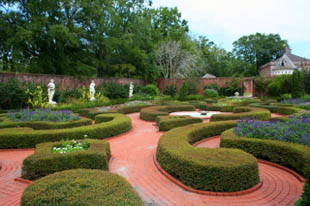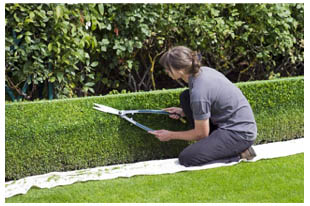How to Make Your Own Topiary
Have you found your yard to be lacking something? Does it seem a little bland? Or, do you just want to make your garden pop?

Topiary might be the answer to what you are looking for. Of course, topiary can take many forms, including topiary dogs, hedge topiary, topiary trees, and moss topiary. Each has its own benefits and maintenance requirements. Different Kinds of Topiary
Believe it or not, there are four categories that topiary falls into. The first is the most well-known, which is shrub topiary. The second is vine topiary, which consists of having vines grow over a topiary form. Third is hedge topiary, which is similar to hedge topiary. Finally, there is herb topiary, which looks nice and has a practical application.
Another choice to make is whether you want a live topiary or a preserved topiary. Live topiaries require regular maintenance, while preserved topiaries are maintenance free.
How do you go about making each one? It’s actually pretty simple!
Shrub Topiary

1. If you’re just starting out, finding a small shrub in a pot is best. That way, you can easily make it into whatever shape you want and not feel overwhelmed.
2. A topiary form is useful, especially when just starting out. This way, you’ll be able to accurately prune your shrub as it grows and keep the shape you want.
3. You will need to train the plant to take the shape you want. You don’t want to take too much off of the sides; taking up to three inches off of large topiaries and one off of small, potted topiaries is pretty standard. This ensures that it can still grow properly. It is a slow process and will take a while to get it to the exact shape that you want.
4. Once you have your shape, if you have a live topiary, it will continue to grow. Regular pruning will be necessary to maintain the shape.
Vine Topiary
1. With vine topiaries, a topiary form is a must. The vines need to attach to something, so a metal form is perfect.
2. Picking the ivy can be fun. English ivy is the most common choice, as it grows quickly, but there are other types to choose from.
3. You might think about adding some peat moss to help shape the topiary and give it a fuller look as the vines grow.
4. Next is planting the vine around the form. If one doesn’t seem like enough or if you want it to grow even faster, then plant more.
5. Finally, it’s time to train the vines to stay around the form. If there are any problem parts, you should prune them off so the vine keeps forming to the correct shape.
Hedge topiary and herb topiary work in much the same way as shrub topiary. Herb topiary is more of a delicate job, as the branches tend to be thinner and break a bit easier. They require the same amount of work as the shrub topiary.
If these ideas aren’t doing it for you, lighted topiary might be a good option. It can add to your overall topiary and really make it pop.
Or, you could add lights to faux topiary or artificial topiary. It makes a wonderful decoration with no maintenance. If you have a busy schedule, but want an amazing looking garden or yard, having artificial topiary trees is the best option available.
For added pop, include some tall artificial trees. These could break up the look of your yard or garden and be an eye-catcher.There are so many things you can do with topiary and it’s not as hard as it might seem. For those who have calm lives, this can be a wonderful hobby that is not only practical, but also a fun hobby. Topiary can make a difference wherever it is.

.png)
.png)
.png)
.png)

.png)